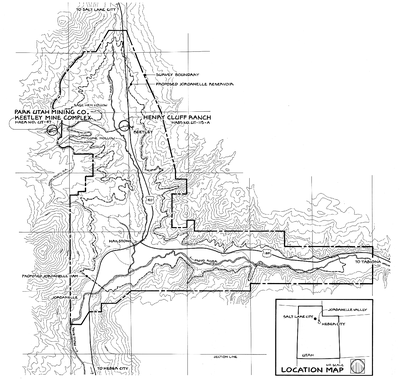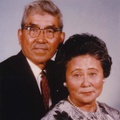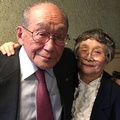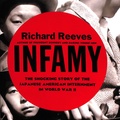“Attempted but failed” was my understanding of the voluntary evacuation efforts by the Japanese Americans when Japan declared war against the Allied Forces in attacking Pearl Harbor.
Ryo Takasugi’s book on Fred (Isamu) Wada took me by surprise. The book, written a decade ago, was recently republished as The Man who ushered in the Tokyo Olympics (1964) from Kobunsha. What caught me was its subtitle “The Story of an Nisei Japanese who Refused to go to the Concentration Camp.”
The scene began at the affluent Chapultepec residence of Mexican General Jose de J. Clark Flores, then the Vice President of the IOC. Fred Wada visited General Clark as a special envoy representing the Tokyo Olympic Prep Board.
“Muy encantado de ver a Ud. por aquí y agradezco mucho a Ud., Senor General!”
“Sr. Wada, Ud. puede hablar español!”
“Un poquito, nada más!”
“I own Farmer Fred’s Market in Los Angeles. There are many Mexicans among our employees. So maybe OK for simple conversations.”
General Clark softened with a smile.
“During the War, I was a farmer in Utah, as I didn’t want to go to the camps.”
“Sr. Wada, this is the first time I heard there were Japanese Americans who didn’t go to the camps!”
“It’s true, General. 130 of us went to Keetley, Utah. It was very wild and barren land. Masako and I had a hard time cultivating it!”
Fred reminisced quietly awhile and looked at Masako, his wife. The General stood impressed and shook Fred and Masako’s hands. This was the moment when General Clark befriended Fred and eventually gave Tokyo, Japan his support and recommendation as the next Olympic site.
“130 Japanese Americans in Keetley, Utah!” Wow! First time I heard of this as well. I searched for Keetley on Google. It was located about 60 kilometers east from Salt Lake City, and south close to Park City. It was once a mining town but is now submerged underwater in the Jordnanelle Reservoir since 1995. The Reservoir is north of Heber City. Both Park and Heber Cities belong to the same Wasatch (Native Indian word for Mountain Pass) County, aka Wasatch Back. Salt Lake City is aka Wasatch Front.
Upon hearing the news about Pearl Harbor, Fred Wada, a produce marketer in Oakland, felt that the evacuation of the Japanese Americans from the west coast was imminent. He had read in the paper that the State of Utah was short-handed in farming and traveled to Utah with Masako. With the help of a Japanese American acquaintance, he nailed down key people to talk to, participating in local farmers’ assemblies and committing their allegiance to the U.S. Government.
Although Duchesne (eastern Wasatch) was the only county which voiced assent, Wada felt there was a ray of hope. He sought the same Wasatch, but closer to Salt Lake City for marketing, and struck a deal with George Fisher (Keetley Mayor, cattleman, and developer) for a 3,800 acre land leasing agreement at $7,000 a year when George offered his old housing facilities used for miners. Fred met Utah Governor Herb Maw before returning to Oakland, promising they would not be a burden to the state.
Fred Wada made the right decision, I thought. Utah is known as a Mormon state, a religiously homogeneous society. I wasn’t sure if George Fisher was Mormon, but Governor Maw was most likely a doyen (senior member), his words honored by most Utahans.
The Keetley Farm Colony plan was laid. Fred mustered like-minded colleagues and their families under the banner “Food for Victory.” March 29, 1942 was the deadline they had to meet, otherwise they had to report for the enforced evacuation as per the Executive Order 9095.
The snow covered highland (1400 meters above sea level) and harsh winter (often down to 20 below zero) waited their arrival, accompanied with racial animosity. As the community was setting up the hot bath they brought from Oakland, they were threatened with a dynamite explosion, which was triggered by the former mining dwellers that were requested to leave Keetley.
The Japanese Americans first busied themselves repairing the buildings in which they resided. Once the spring snow began to melt they cleared the sagebrush from the land, dug out the rocks by hand, and then began to plant a large truck garden with lettuce and strawberries. They raised chickens, pigs, and goats.
Their discovery when the snow thawed was disappointing. The arable land was 1/10th of the contracted 3,800 acres with ubiquitous stones. The deadly report, I read, 50 tons of stones hauled out of 150 acres. No machines were available then. All were done manually with sweat.
They didn’t complain. They just went to work long and enduring hours. Once the farm was established, maintaining it was left to the wives and children while many of the men worked as laborers in sugar beet fields on surrounding farms. The first year’s crops were presented to Governor Maw and made some Salt Lake City news, but later efforts were obstructed by the Anti-Japan road blockades. Fred had to switch to a less desirable neighboring market in Park and Heber Cities. The season was short, snow came in September.
Fred narrowly broke even in his first year, but the second year brought a serious crisis. 50 pigs they had raised died of a sudden disease. Planning to use the land for sheep herding, Fred negotiated with Fisher for the second lease agreement. Fisher vetoed sheep herding, because of his adamant conviction that sheep spoil pastures. The negotiation failed. Details of the aftermath were not known, but the main workforce went into subcontracting, leaving the remaining families in Keetley until the war ended.
Fred moved his family to Murray, near Salt Lake City, leasing a 16 acre farm, where he could produce celery and onions year round.
What drove Fred to Utah, in my opinion, was 1) his clairvoyance and entrepreneurship; 2) his faith in humanitarian creeds; 3) his quest to test his excellence in marketing. He no doubt believed men have no enemies if he spoke from his heart, allaying fears of others and even profiting from adversity. He also put his full confidence in the Mormons.
I don’t know if he knew Governor Ralph Carr of Colorado who might have welcomed them to Arizona instead of Utah. I have just read “Colorado Governor Ralph Carr who saved the Japanese Americans” (Japanese title, translation 2013) written by Adam Schrager. The original title is The Principled Politician: The Ralph Carr Story which tells the story of the Governor who stakes his political future on his Japanese stand. Governor Carr might have provided Fred with a better test site that would have made Fred’s marketing a slam dunk. Who knows?
*This article was originally published on Riosloggers on November 28, 2013.
© 2013 Rio Imamura









